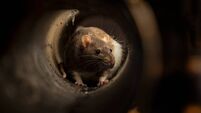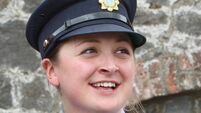Twin boys saved by first Irish surgery in womb
The surgery was to correct a complication that would have almost certainly killed them if left untreated.
About one-third of all twin pregnancies are identical and up to one quarter of them can develop twin-to-twin transfusion syndrome.
The condition occurs when abnormal blood vessels in the placenta within the womb transfuse too much blood into one baby while the other is left with too little blood.
This syndrome is very dangerous and can inhibit the development of one twin while leading to a variety of health complications for both twins. When left untreated it leads to the death of both babies in nearly 100% of cases.
Margaret Kershaw, 35, now living in Dublin but originally from Mallow, Co Cork, found that her babies had the complication when she had a routine ultrasound scan at 20 weeks’ gestation at the Rotunda Hospital in Dublin.
Her medical team, Professor Fergal Malone and Dr Carole Barry-Kinsella, offered her the chance to have the life-saving in-utero operation using tiny surgical instruments and lasers to correct the blood flow from the placenta.
Professor Malone, consultant obstetrician at the hospital and head of the Department of Obstetrics and Gynaecology at the Royal College of Surgeons in Ireland, said the procedure, developed in the US, involved inserting a camera less than one-eighth of an inch thick into the womb.
The operation was conducted last January when Margaret, a first time mother, was just into the 21st week of her pregnancy. She was brought to the newly equipped foetal operating theatre at the hospital where the laser instruments were used to repair the blood vessels in the placenta.
Dr Barry-Kinsella said Margaret tolerated the procedure well and was sent home the following day.
“She was followed closely over the subsequent 12 weeks and both babies thrived. At 33 weeks gestation on March 28 she went into early labour and we delivered her twins by caesarean section,” she said.
Margaret, a bank official with the AIB, was delighted that Ryan and Dylan, who weighed 2.14 (4lb 11oz) and 2.16 kg (4.12oz), were both well.
“Because they were taken to the hospital’s intensive care unit I had to wait six hours before I could see them. That was hard but the staff at the unit made it a bit easier by sending me a picture of my two boys,” said Margaret.
Master of the Rotunda Hospital Dr Michael Geary said the radical life-saving surgery was previously only available to a handful of centres in Europe and North America and, until now, Irish parents faced with the problem had to undergo the surgery abroad.
The little boys spent two weeks in the hospital’s neo-natal intensive care unit before being discharged. They are four months old and thriving.
* www.rotunda.ie












